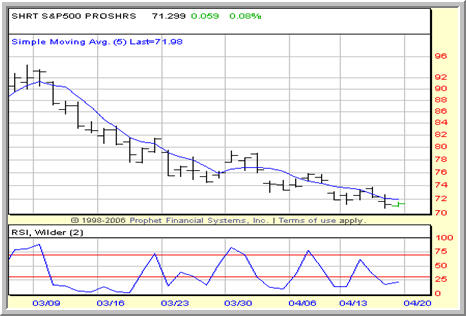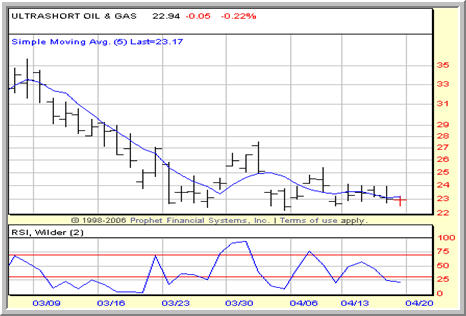What You Need to Know About Trading and Investing in Short ETFs
One of the most exciting innovations in the world of exchange-traded funds (ETFs) is undoubtedly the availability of short or inverse ETFs.
For some time, traders have been able to achieve short or inverse exposure by way of futures, options and even mutual funds that tracked the inverse of major indexes like the S&P 500 or the Russell 2000. Rydex Investments was among the early pioneers of short or inverse mutual funds.
But short or inverse ETFs take the game of both wagering against stocks as well as hedging long positions to another level entirely. By allowing the average retail trader to speculate on the decline of financial stocks, for example, or to protect investments in technology stocks through a short or inverse technology ETF, a whole world of trading and investing has been opened. Traders who are looking for more flexibility and diversity when it comes to expressing their opinions about market direction owe it to themselves to learn more about short and inverse ETFs.
ProShares Short S&P 500 ETF – SH

What is a Short ETF?
A short or inverse ETF is an exchange-traded fund that tracks the opposite of its underlying benchmark. So, for example, the ProShares Short S&P 500 ETF
(
SH |
Quote |
Chart |
News |
PowerRating) tracks opposite of the S&P 500. If the S&P 500 is up by 2%, then the SH will be down by approximately 2%. If the S&P 500 pulls back by 4%, then the ProShares Short S&P 500 ETF will advance by 4%.
How do short and inverse ETFs do this? As with leveraged ETFs, short ETFs use a variety of derivative products in order to achieve their inverse performance. These derivatives can include futures, options, swaps or other instruments and often use leverage to achieve the ETFs’ goals.
There are two kinds of short or inverse ETF. The first kind is non-leveraged. By this, I mean that the non-leveraged inverse ETFs track their underlying benchmark on a 1-to-1 basis. See the above example of the SH. Leveraged short ETFs, on the other hand, track the opposite of their underlying benchmark on a 2-to-1 basis or even a 3-to-1 basis with triple leveraged ETFs.
Consider for instance the ProShares UltraShort Oil & Gas Index ETF
(
DUG |
Quote |
Chart |
News |
PowerRating) which tracks two times the inverse of the Dow Jones U.S. Oil & Gas Index. When this index falls by 3%, DUG gains approximately 6%. Conversely, when the index advances by 1%, the DUG will correct by approximately 2%. This is due to DUG’s 200% leverage.
Leveraged short ETFs give traders a tremendous amount of power and flexibility, both to magnify potential rewards for speculative trades, as well as to lower the cost of hedging long stock positions through 2-to-1 or 3-to-1 leverage.
ProShares UltraShort Oil & Gas ETF – DUG]

Are you new to exchange-traded funds (ETFs)? Be sure to read our ETF primer, ETF Basics: What You Need to Know About Exchange-Traded Funds.
How to Take Advantage of Short ETFs
Speculating and hedging remain two of the best ways for the average trader to take advantage of short and inverse ETFs.
Traders can use short or inverse ETFs to speculate on the likelihood of markets moving lower without having to either sell ETFs short or entering the options market. Leveraged short ETFs are beneficial for traders and investors alike. Leveraged short ETFs provide one way for short term traders to trade without stops (instead relying on the short or inverse ETF for downside protection). Leveraged short ETFs also make it easier for long term investors to stay with their stock positions for longer periods of time and through higher levels of volatility.
Bear markets can give the short side of the market a bad name — that is, unless you’ve taken the time to learn and understand just what having some short exposure from time to time can do for you and your investment and trading goals. And short and inverse ETFs, more available and more liquid now than every before, can be a major part in making this happen.
According to a recent report, eight out of ten securities traded are exchange-traded funds. Want to learn how to trade them? Click here to order High Probability ETF Trading, the first quantified book of trading strategies to improve your ETF trading.
David Penn is Editor in Chief at TradingMarkets.com.
